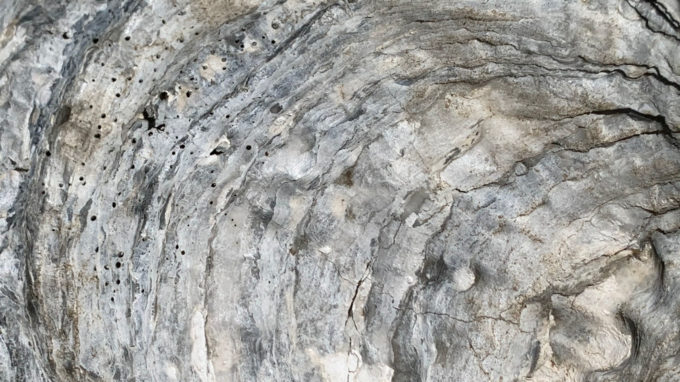The Atlantic oyster (Crassostrea virginica) is the keystone species that allowed the Hudson River estuary to develop into one of the richest ecosystems on earth, and symbolically it encompasses the full history of the metropolis that exists in the bio-region today.
The massive oyster beds of New York Bay developed on the end moraine, a vast belt of sand and gravel that marks the terminus of the Wisconsin Glacier from 20,000 years ago. As the glacier receded and sea levels stabilized, the oysters proliferated abundantly in the diverse and bountiful ecosystem. The countless rings on the large oyster shells speak to this deep, geological time.
Numerous shell middens along beaches and shorelines of intertidal zones testify to millennia of large-scale indigenous summer gatherings after a winter of foraging in smaller groups. The oysters are inseparable from the notion of home for the original peoples of the region and constantly remind us of their presence despite the history of violence, dispossession, and diaspora.
The development of the New Amsterdam company town that later became New York, depended heavily on the labor of enslaved African and Caribbean people. Some of them were tasked to harvest oysters, and following emancipation, many black oystermen made a living on the coasts of New Jersey, Staten Island, and Long Island. The oysters also remind us of their longstanding presence in this bio-region.
When the first Europeans arrived in the region, they too depended on the oysters—not just as food, but also for the lime that allowed them to build fireplaces and stone or brick dwellings. In their belief system, the oysters were a valuable commodity that they could harvest, process, and commercialize in pursuit of unbridled wealth accumulation. By the 1900s, the metropolis was built, yet overharvesting, habitat destruction, and pollution depleted oyster populations. The oyster’s pivotal role in empire-building became forgotten.
The Public History Project, committed to supporting indigenous cultural revitalization and mapping and archiving the interconnections between dispossession and enslavement in order to support building public capacity to face climate injustices, sees the oyster shell as a guiding symbol. The oysters are an enduring symbol of the bio-region’s quiet strength. When held in a tilted position, oysters appear like a listening ear. As we try to assemble a public history of this region, we need to listen deeply to historically silenced voices and the cautionary tales of marred ecosystems. By invoking the oyster, we recall the memory of generations of gathering in these lands and waters to listen to each other after a long and difficult time apart while coming together to restore a balanced human-ecology relationship.
